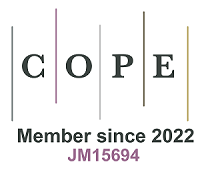fig1

Figure 1. Schematic diagram of genetically engineered modification mechanism of CMVs and series of strategies for separation and purification. (A) Strategies for modifying CMVs by genetic engineering; (B) Transfection and delivery of gene or microRNAs sequence via vectors including LNPs and vectors are core steps in the process of cell genetic engineering. Hereafter, the donor cell’s biosynthetic machinery is employed to produce specific biomacromolecules which will execute specific functions inside and outside the cell. Thus, CMVs generated from original cells were modified to load exogenous biotherapeutics and used for disease treatment through genetic engineering methods; (C) The aEVs are acquired by series of sonication and extrusion; (D-E) Ultracentrifugation depends on size or molecular weight employing a series of centrifugal forces and duration, including two types of preparative ultracentrifugation--differential ultracentrifugation and density gradient ultracentrifugation; (F) Size-Exclusion Chromatography; (G) Microfluidics-based Technologies. LNP: lipid nano particle; ILVs: intraluminal vesicles; MVBs: multivesicular body; ER: endoplasmic reticulum; CMVs: cell membrane-derived vesicles.










